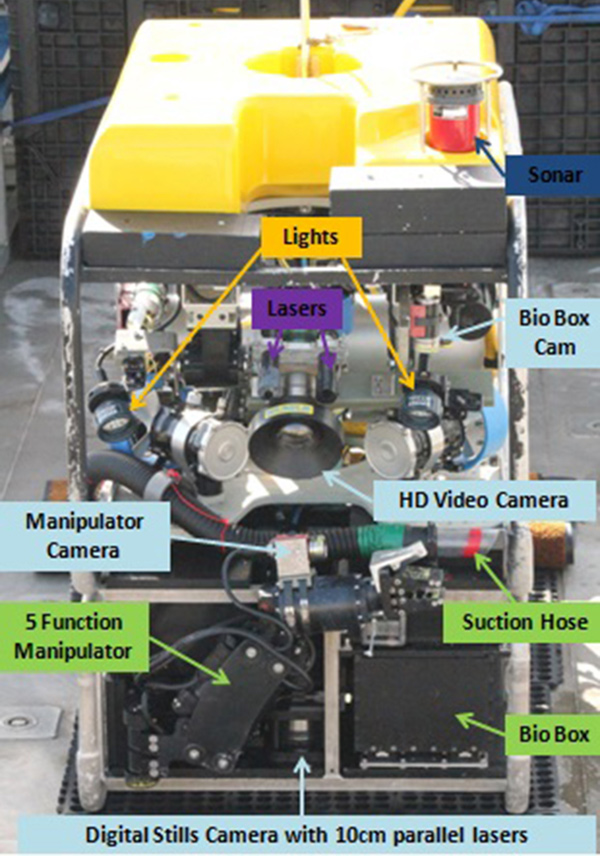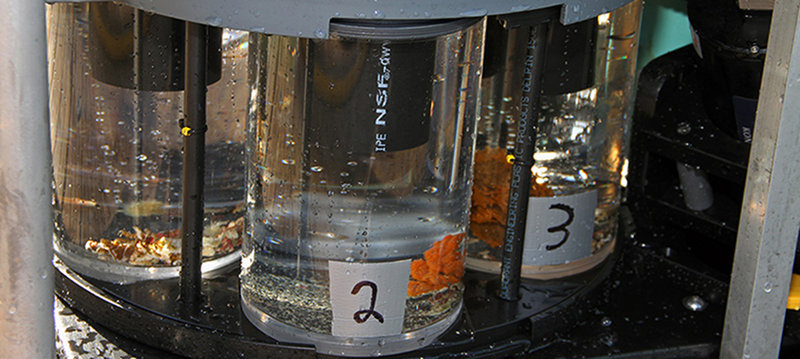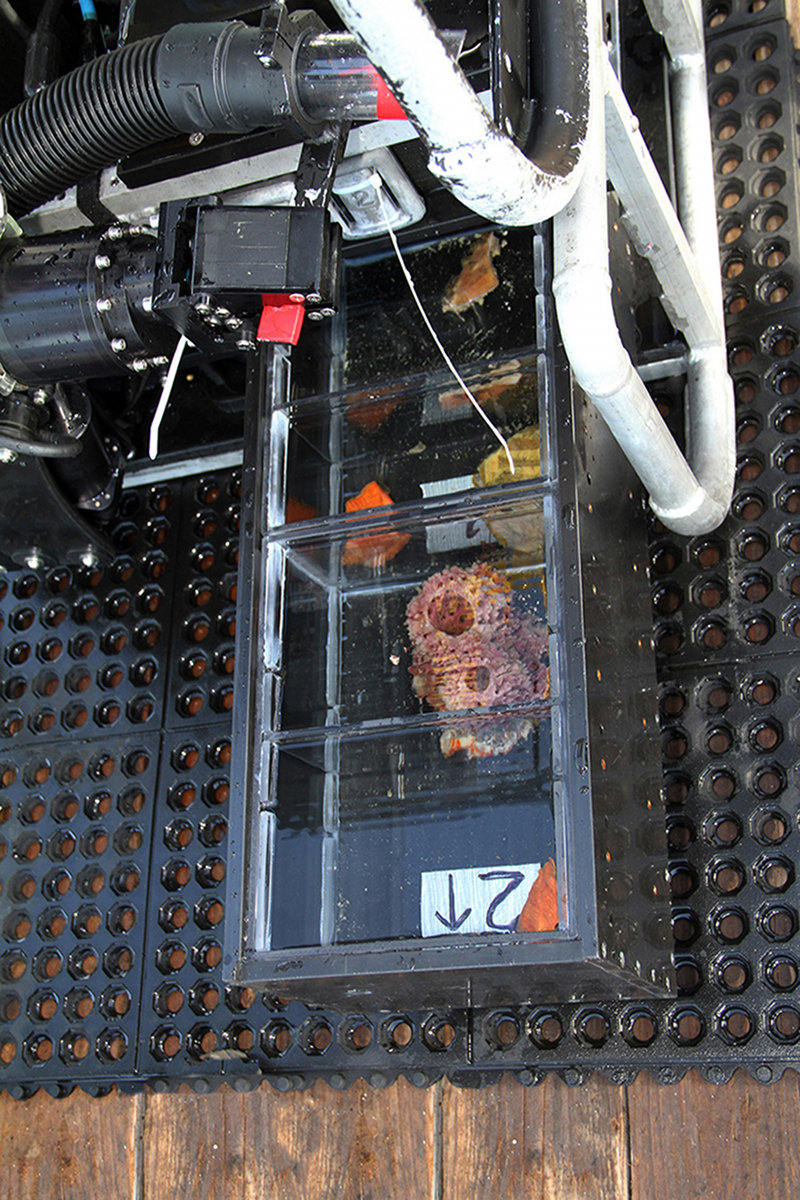
By Jason White - University of North Carolina at Wilmington (UNCW) - Undersea Vehicles Program
August 25, 2015

The Mohawk remotely operated vehicle (ROV) with the tool skid attached. The value of collecting specimens from the seafloor cannot be understated. Video and pictures alone often can’t be used to reliably identify species and can never provide the physical material required to fuel marine biomedical and biotechnology research. Image courtesy of Jason White, UNCW. Download larger version (jpg, 214 KB).
This year the remotely operated vehicle (ROV) team (UNCW’s Undersea Vehicles Program ) brought along a new piece of equipment with them: the sample collection skid. The collection skid attaches to the bottom of the ROV, making the ROV 14 inches taller. This piece of equipment allows the ROV to collect samples. The collection skid was designed and built at Florida Atlantic University-Harbor Branch Oceanographic Institute by Bill Baxley with the goal of replicating many of the collection capabilities the Johnson-Sea-Link manned submersible had, but in a much smaller package.

Samples collected with the suction hose are deposited into discrete two-liter buckets at the back of the vehicle. A video camera on the sampler provides visual confirmation that specimens of interest make it into the buckets. Image courtesy of Brian Cousin, FAU-Harbor Branch. Download larger version (jpg, 482 KB).

The bio box opens like a drawer to receive samples picked up in the manipulator jaws. There is a video camera on the manipulator that the operator at the surface uses to guide samples from the seafloor to the bio box. Image courtesy of Brian Cousin, FAU-Harbor Branch. Download larger version (jpg, 573 KB).
The collection skid consists of three main pieces of equipment. It has an electric, five-function manipulator arm on the front, which allows scientists to pick up different samples or to grasp the suction hose.
The next piece of equipment is the suction sampler. The suction sampler consists of a two-inch vacuum hose that can be gripped and guided by the manipulator arm. The amount of suction and direction of flow is controlled by a variable speed, reversible pump. The hose goes to one of five discrete two-liter buckets, which can be rotated into place for the next sample.
The last piece of equipment on the collection skid is the bio box. The bio box uses a chain drive to open and close the box on command. This is where the samples picked up with the manipulator jaws are stored. The bio box is 24 inches long, 9 inches wide, and 7.5 inches deep. It can be left completely open, or separators can be added to divide the bio box into five discrete sections to keep individual samples separated.
The collection skid was also designed to allow us to “plug and play” different scientific instruments that can be integrated onto the ROV. The skid can provide 24 volts of DC power in addition to RS-232, RS-485, and Ethernet communication protocol. On this mission, we are using a FastCat Seabird CTD to collect physical oceanographic data. The CTD collects continuous conductivity (salinity), temperature, and depth data, as well as oxygen saturation, while the ROV is in the water and allows us to be more time-efficient, since we don’t have to deploy the large CTD on the R/V Walton Smith every day.
This is the fourth year we have completed ROV surveys at Pulley Ridge. At this point, the scientists have tentatively identified many sponges, corals, algae, and other organisms from the digital video and still photographs. Many of the organisms can be positively identified now that we are collecting samples for taxonomic identifications. Our goal, on this mission, is to obtain as many samples as possible to confirm our tentative species identifications on Pulley Ridge. By the end of our third day of ROV operations, we have already collected 22 specimens in total, including 13 algae, 5 sponges, and 4 corals.
The collection skid is a great addition to the Mohawk ROV. Our first mission with the collection skid took place this past May and we collected over 174 samples on a cruise with NOAA’s Cooperative Institute of Ocean Exploration and Research Technology (CIOERT ). Last month at the Flower Garden Banks National Marine Sanctuary, we deployed 50-pound concrete markers for a long-term monitoring project at Stetson Bank. If you would like to see more pictures and video of the Mohawk ROV and collection skid in action, please visit our Facebook page.